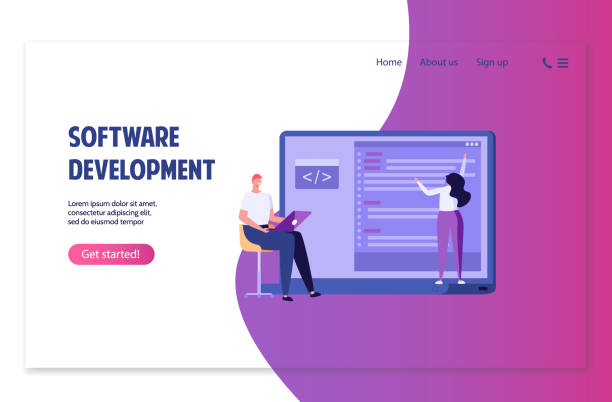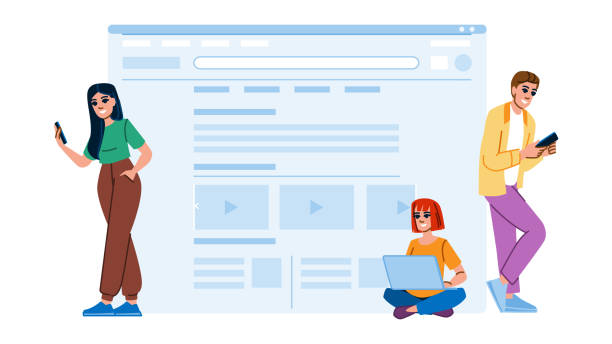Introduction to the Importance of Multilingual Website Design

In today’s world, where geographical boundaries have become less meaningful and the internet has transformed into a global network, having a strong online presence and global accessibility is vital for any business or organization.
One of the most important steps in the path of globalization is multilingual website design.
This approach allows you to connect with a wider audience worldwide, without language barriers preventing them from accessing your information.
A single-language website, even if in a widely used language like English, neglects a large portion of the world’s population.
Statistics show that many internet users prefer to consume content in their native language, and this has a direct impact on their conversion rates and engagement with your website.
Beyond mere content translation, multilingual website design involves considering cultural nuances, optimizing for local search engines, and providing a seamless user experience for visitors from diverse linguistic and cultural backgrounds.
This approach not only expands your target market but also enhances your brand’s international credibility and trust.
In this article, we will explain the various aspects of this process.
Did you know that customers’ first impression of your company is your website? Double your business’s credibility with a powerful corporate website from Rasawwb!
✅ Custom and stunning design tailored to your brand
✅ Improved user experience and increased customer acquisition
⚡ Get a free consultation!
Advantages and Challenges of Implementing a Multilingual Website
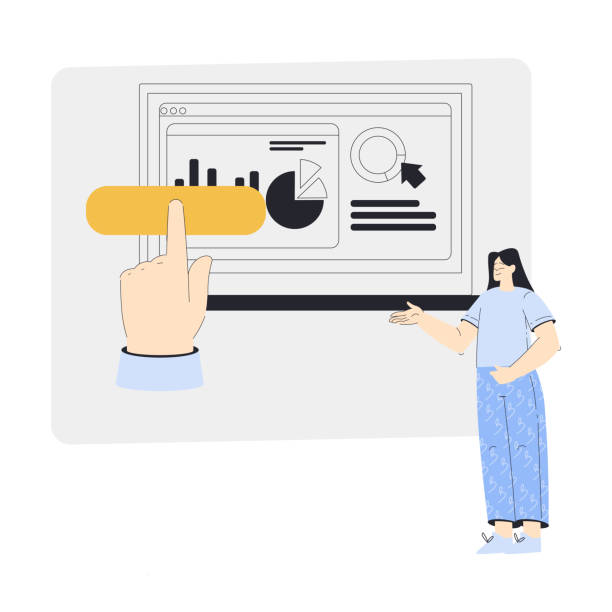
Multilingual website design brings countless competitive advantages to businesses.
Increased access to new markets, improved international SEO, enhanced local customer trust, and strengthening brand image as a global entity are among these benefits.
When a user from another country views your website in their native language, they feel a greater connection with your brand, and the likelihood of them becoming a customer significantly increases.
This approach also helps you to get ahead of competitors, as many businesses are not yet aware of the importance of globalization.
However, implementing a multilingual website is not without its challenges.
Content management in multiple languages can be complex and time-consuming.
The need for accurate and high-quality translations, localization management for each region, technical maintenance and content updates across multiple versions, and issues related to international SEO (which include managing URL structure, hreflang tags, and geo-targeting) are among these challenges.
Analyzing these aspects before starting the project helps you to approach this path with a realistic perspective and be prepared for potential obstacles.
Technical Considerations in Multilingual Website Design

The technical aspects of multilingual website design are of particular importance and have a direct impact on your site’s performance and SEO.
One of the most important technical decisions is choosing the appropriate URL structure.
Three main approaches include subdomains, subdirectories, and country code top-level domains (ccTLDs).
Each has its own advantages and disadvantages that should be chosen based on project goals and resources.
For example, subdomains like “fr.example.com” signal to search engines that each language is an independent website, while subdirectories like “example.com/fr/” are often considered parts of a single website.
Top-level domains like “example.fr” provide the strongest geographical signal but come with higher costs and management complexity.
Another crucial tool is the hreflang tag.
This tag tells search engines which version of a page is related to which specific language or geographical region.
Correct use of hreflang is very important to prevent duplicate content issues and direct users to the correct language version.
Also, site loading speed, Unicode (UTF-8) support, and compatibility with various devices (responsive design) for all languages must be considered.
Choosing the right platform and database architecture that can manage a large volume of content in different languages is also among the specialized considerations in this area.
Comparison Table of Common CMSs for Multilingual Capability
| URL Structure | Example | Advantages | Disadvantages |
|---|---|---|---|
| Subdirectories | example.com/fr/ |
Simple to implement, stronger SEO due to shared domain authority. | Weaker geographical signal, might become complex in some CMSs. |
| Subdomains | fr.example.com |
Medium geographical signal, possibility of hosting on separate servers. | Requires separate management for each subdomain, domain authority distribution. |
| Country Code Top-Level Domains (ccTLDs) | example.fr |
Strongest geographical signal, completely independent. | Very costly, requires separate management for each domain, higher complexity. |
Choosing the right approach for multilingual website design depends on the business’s long-term strategy and target markets.
Content Translation and Localization Strategies

One of the most sensitive stages in multilingual website design is content translation and localization.
Mere word-for-word translation is not enough; content must be culturally and linguistically meaningful and engaging for the local audience.
This stage requires precise guidance approaches.
First, deciding on the type of translation is essential: will you use machine translation, human translators, or a combination of both? For sensitive or marketing content, human translation by native-speaking translators specialized in the relevant field is preferred.
This ensures that not only is the original message preserved, but the tone, terminology, and even cultural references are also accurately conveyed.
Localization goes beyond translation and includes adapting units (such as currency, date, and time), images, colors, and even page layout to the cultural preferences of the target region.
For example, colors may have different meanings in different cultures.
Ensuring that images and videos are appropriate for local audiences is an important part of this process.
Additionally, considering the text direction (e.g., right-to-left for Persian and Arabic) and designing the user interface accordingly significantly improves the user experience.
Using Content Management Systems (CMS) with advanced localization capabilities can facilitate this process.
Continuous review and testing of localized content by native speakers is also essential to ensure its quality and accuracy.
How much does losing business leads due to an unprofessional website cost you? Solve this problem forever with professional corporate website design by Rasawwb!
✅ Increased credibility and trust among potential customers
✅ Easier acquisition of new business leads
⚡ Get a free consultation now!
SEO Optimization for Multilingual Websites

SEO for a multilingual website has its own unique challenges and opportunities.
Without proper optimization, even the best multilingual website design may fail to reach its target audience.
This educational section shows you how to strengthen your international SEO.
The most important aspect of international SEO is ensuring that search engines can discover, crawl, and index all language versions of your site.
As mentioned earlier, correct use of hreflang tags to indicate different language versions of a page is crucial.
These tags help Google and other search engines to deliver the correct page version based on the user’s language and geographical location.
Keyword research for each language and target market is also very important.
Keywords that are effective in one language may have a different meaning or be irrelevant in another.
Therefore, keyword research should be conducted natively and by individuals familiar with the local culture and language.
Building internal and external links (backlinks) to different language versions can also help increase the authority and ranking of each version.
Furthermore, page loading speed in all languages and responsiveness for mobile devices are important factors in SEO ranking.
Registering the site in Google Search Console and Bing Webmaster Tools for each language version or domain, and using regional reporting tools, allows you to monitor your international SEO performance.
User Experience (UX) in Multilingual Design
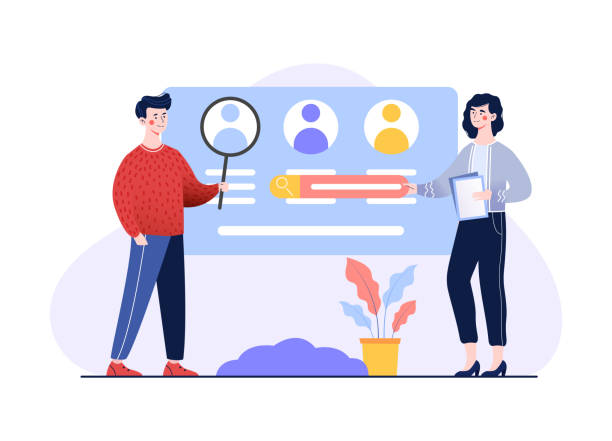
Successful multilingual website design goes beyond mere text translation and heavily relies on providing a seamless and desirable user experience (UX) for all visitors.
This specialized aspect emphasizes how users interact with your website, regardless of their native language.
One of the key elements is providing a clear and accessible location for language switching.
This is usually displayed as a dropdown menu or small flags at the top of the page or in the footer.
The placement and design of this language switcher should be such that the user can easily find it.
Additionally, considering cultural differences in visual design, layout, and even site navigation is very important.
For example, some cultures may have a specific order for navigation elements or react differently to certain colors.
Using fonts that support all characters of different languages prevents text display issues.
Furthermore, ensuring that all interactive elements, forms, and error messages are also correctly translated and localized is essential for maintaining user trust.
User testing with native speakers from each target region can help identify navigation issues or cultural misunderstandings and significantly improve the user experience.
A good UX on a multilingual site makes users feel more comfortable and connected.
Choosing the Right CMS and Tools for Multilingual Support

To facilitate the process of multilingual website design and its content management, choosing a suitable Content Management System (CMS) with strong multilingual capabilities is crucial.
This guide section helps you make the right choice.
Some CMSs like WordPress, Drupal, Joomla, and Shopify offer multilingual support through plugins or built-in modules.
For example, WordPress, with plugins like WPML or Polylang, provides the ability to create and manage different language versions of a website.
Drupal natively has stronger multilingual capabilities and is suitable for larger and more complex projects.
When choosing a CMS, pay attention to aspects such as ease of translation management, multilingual URL management capabilities, hreflang tag support, form and template localization capabilities, and an active support community.
In addition to the CMS, there are other tools that can improve the translation and localization process.
These tools include Translation Management Systems (TMS) that automate the translation workflow, CAT (Computer-Assisted Translation) software that helps translators be more efficient, and cloud platforms for collaboration between translators and reviewers.
Choosing the right tools can reduce costs and increase translation quality, thus significantly contributing to the overall success of the multilingual website design project.
Comparison Table of Common CMSs for Multilingual Capability
| CMS | Native Multilingual Capability | Popular Plugins/Modules | Strengths for Multilingualism |
|---|---|---|---|
| WordPress | No (with plugin) | WPML, Polylang | Large community, ease of use, many plugins. |
| Drupal | Yes (powerful) | Core Translation Modules | High flexibility, complex content management, security. |
| Joomla | Yes (new versions) | Core Language Modules | Balanced between simplicity and power, native support. |
| Shopify | Yes (for online stores) | Shopify Translate & Adapt | Suitable for e-commerce, ease of setup. |
Monitoring Performance and Analyzing Multilingual Site Data
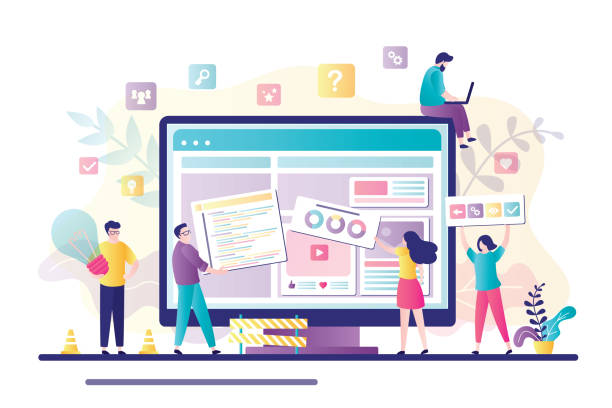
After multilingual website design and launch, the crucial stage of performance monitoring and data analysis begins.
This analytical approach allows you to measure the effectiveness of your multilingual strategies and implement necessary improvements.
Tools such as Google Analytics and Google Search Console are very useful for this purpose.
In Google Analytics, you can analyze incoming traffic, user behavior, and conversion rates based on language and geographical location using filters and segments.
This shows you which language versions perform better and which ones need further optimization.
Metrics such as time on site, bounce rate, pages per session, and conversion rate for each language provide valuable insights.
For example, if the bounce rate for a specific language is high, it might indicate issues with translation quality, cultural mismatch, or technical problems.
In Google Search Console, you can examine your website’s search performance across different languages and countries.
This tool helps you identify keywords through which users reach your site, crawling and indexing issues, as well as the correct display of hreflang tags.
Regularly collecting and analyzing this data helps you make data-driven decisions for continuous improvement of your multilingual site and achieve the best return on your investments.
Tired of losing customers due to poor e-commerce website design? With Rasawwb, solve this problem forever!
✅ Increased sales and visitor-to-customer conversion rate
✅ Smooth and engaging user experience for your customers⚡ Get a free consultation
Common Mistakes and How to Avoid Them
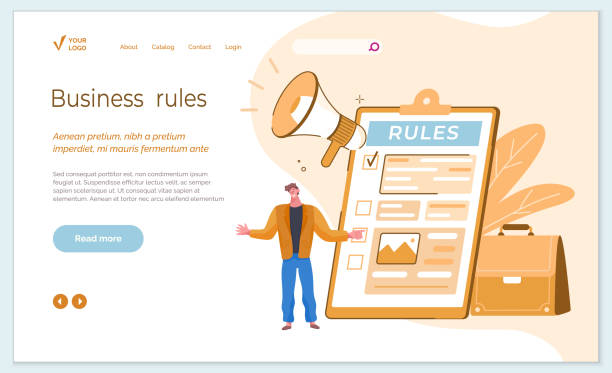
In the journey of multilingual website design, common mistakes exist that can harm your efforts.
This section helps you become aware of these challenges and avoid them.
One of the biggest mistakes is solely relying on machine translation without human review.
While machine translation tools have advanced, they are still unable to fully grasp cultural nuances, terminology, and appropriate tone, and can lead to inaccurate or humorous translations that undermine your brand’s credibility.
Another common mistake is neglecting international SEO.
Without proper use of hreflang tags, localized keyword research, and appropriate URL structure, search engines may fail to correctly understand different language versions of your site, leading to reduced visibility in search results.
Failure to truly localize content and focusing solely on translation is also a major error.
This includes neglecting cultural differences in images, date and time formats, currency, and even page layout.
Furthermore, forgetting the need for regular updates to all language versions of content can lead to outdated or inconsistent information.
Not providing a clear and accessible language switcher for users also disrupts the user experience.
By being aware of these mistakes and implementing preventive approaches, you can optimize your multilingual site design and maintenance process and ensure its success.
The Future of Global Web Design and Continuous Adaptation

The world of the web is constantly evolving, and multilingual website design is no exception.
This informative and engaging section explores future trends and the importance of continuous adaptation.
With the advancement of artificial intelligence and machine learning, machine translation tools will become increasingly accurate and natural, which can accelerate the localization process.
However, the need for human oversight and cultural localization will remain, as machines cannot fully grasp emotions and subtle cultural differences.
New technologies such as semantic web and structured data help search engines better understand content and provide more accurate results to users, which creates new opportunities for multilingual SEO.
Furthermore, the increasing use of voice search and AI assistants highlights the need to optimize content for spoken responses and conversational queries in different languages.
It is important for businesses to monitor these changes and continuously update their multilingual website design strategies.
Adaptability is the key to success in this dynamic environment.
Investing in up-to-date knowledge and new tools ensures that your website remains competitive in international markets and provides an outstanding user experience.
This is a continuous journey of learning and improvement.
Frequently Asked Questions
| Question | Answer |
|---|---|
| 1. What is multilingual website design? | The process of creating a website whose content is available in multiple different languages so that users from all over the world can interact with the site in their own language. |
| 2. Why should we make our site multilingual? | To expand the market, attract international audiences, improve SEO in global search results, and increase brand credibility and professionalism. |
| 3. What are the methods for implementing a multilingual site? | Using subdomains (e.g., fa.example.com), subdirectories (e.g., example.com/fa/), URL parameters (e.g., example.com?lang=fa), or country domains (e.g., .ir, .de). |
| 4. Is multilingual site SEO different? | Yes, it requires international SEO strategies such as using the hreflang tag, an appropriate URL structure for each language, and keyword research for each language. |
| 5. What considerations should be taken when choosing languages? | Languages should be chosen based on the target market, audience demographics, and current website traffic analysis data. |
| 6. What are common problems in multilingual website design? | Problems related to SEO, translation quality, content management, Right-to-Left (RTL) and Left-to-Right (LTR) support, and user experience. |
| 7. What is the role of CMS in multilingual sites? | Modern Content Management Systems (CMS) (such as WordPress with multilingual plugins or Drupal) offer built-in features or powerful plugins for easy content management in multiple languages. |
| 8. How should content translation be done? | Translation should be done by native and professional translators, not just machine translation, to ensure local tone, culture, and terminology are respected. |
| 9. How is language switching done on multilingual sites? | Typically, a Language Switcher is used in the header or footer of the site, allowing users to easily select their desired language. |
| 10. Is responsive design important for a multilingual site? | Yes, responsive design ensures that the site is displayed correctly on any device (mobile, tablet, desktop), which is crucial for international user accessibility and SEO. |
And other advertising services by Rasawwb Advertising Agency
Smart Digital Advertising: A combination of creativity and technology for analyzing customer behavior through custom programming.
Smart Advertising Campaign: A fast and efficient solution for customer behavior analysis focusing on marketing automation.
Smart Custom Software: A fast and efficient solution for customer acquisition focusing on marketing automation.
Smart Direct Marketing: Revolutionize click-through rates with the help of Google Ads management.
Smart Sales Automation: An innovative service for increasing digital branding through user experience customization.
And over hundreds of other services in the field of internet advertising, advertising consultation, and organizational solutions
Internet Advertising | Advertising Strategy | Advertorial
Resources
Comprehensive Website Design Guide, International SEO Tips, Multilingual Website Development, Multilingual Content Management System
Are you ready to transform your business in the digital world? RasaWeb Afarin Digital Marketing Agency, with expertise in custom website design, targeted SEO, and innovative digital marketing strategies, will be your guide on the path to online success.
📍 Tehran, Mirdamad Street, next to Bank Markazi, Kazerun Jonubi Alley, Ramin Alley, No. 6

